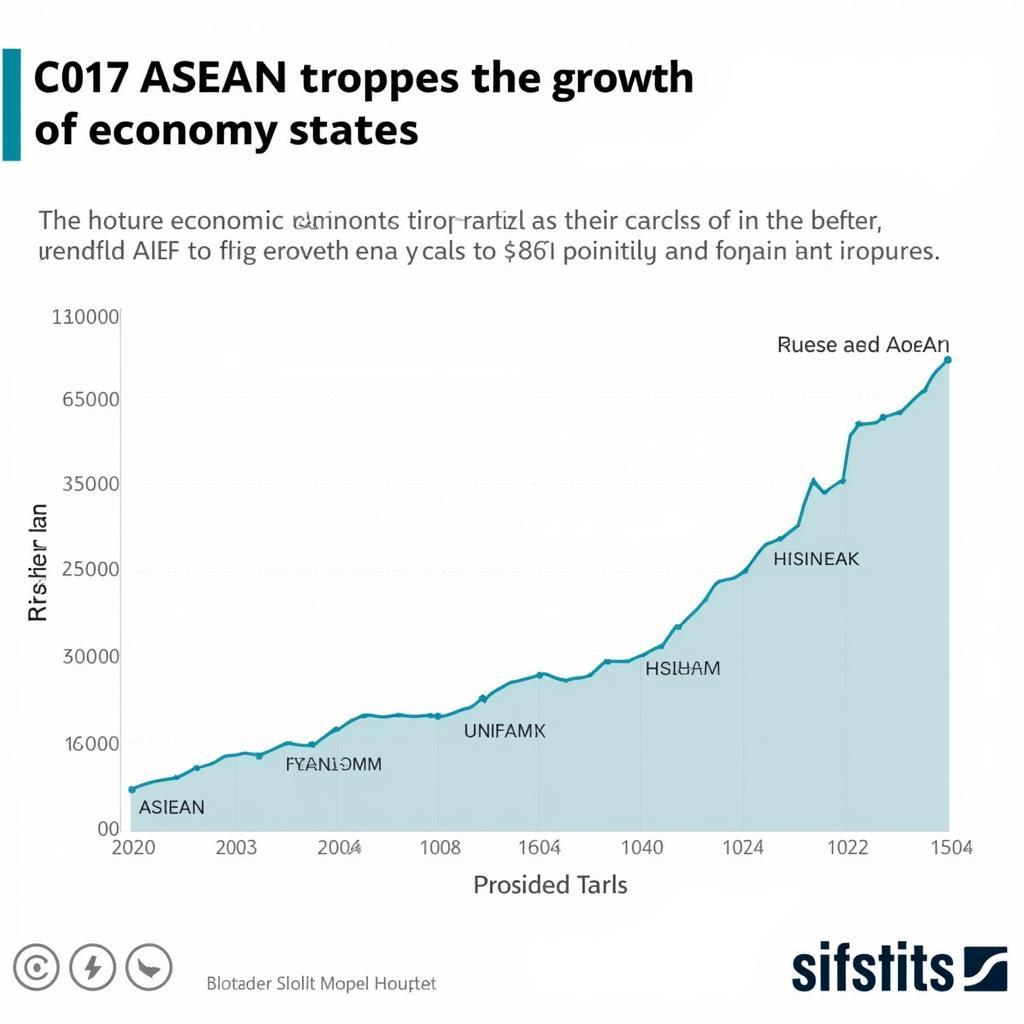The eAse Of Merchandise refers to the efficiency and simplicity of importing and exporting goods within a specific region or country. For businesses operating within Southeast Asia, understanding and leveraging the ease of merchandise is crucial for successful cross-border trade. This article explores the factors influencing the ease of merchandise in Southeast Asia and highlights its impact on businesses operating within the region.
Factors Influencing Ease of Merchandise in Southeast Asia
Several key factors contribute to the overall ease of merchandise within Southeast Asia. These factors can be broadly categorized into infrastructure, regulations, and regional integration efforts:
-
Infrastructure: Robust transportation networks, including well-maintained roads, railways, ports, and airports, are essential for the smooth flow of goods across borders. Efficient customs procedures and border facilities further contribute to reducing delays and costs associated with import and export processes.
-
Regulations: Harmonized trade regulations and streamlined customs procedures across ASEAN member states play a significant role in facilitating trade. Simplified documentation requirements, transparent regulations, and efficient customs clearance processes contribute to a more favorable trading environment.
-
Regional Integration: The Association of Southeast Asian Nations (ASEAN) has implemented initiatives to foster regional integration and enhance trade facilitation. The ASEAN Economic Community (AEC), established in 2015, aims to create a single market and production base, promoting the free flow of goods, services, investments, and skilled labor within the region.
Impact of Ease of Merchandise on Businesses in Southeast Asia
The ease of merchandise directly impacts businesses operating within Southeast Asia in several ways:
-
Reduced Costs: Streamlined customs procedures, efficient logistics networks, and harmonized regulations reduce the time and costs associated with importing and exporting goods. This allows businesses to optimize their supply chains, improve efficiency, and enhance their overall competitiveness.
-
Increased Market Access: Improved ease of merchandise facilitates access to a larger market of over 650 million consumers within the ASEAN region. This opens up opportunities for businesses to expand their customer base, diversify their markets, and tap into new growth opportunities.
-
Enhanced Investment Attractiveness: A business-friendly environment characterized by efficient trade procedures and transparent regulations makes Southeast Asia an attractive destination for foreign direct investment. This influx of investment can lead to job creation, technology transfer, and overall economic growth within the region.
 Cross-Border Trade in Southeast Asia
Cross-Border Trade in Southeast Asia
Challenges and Opportunities for Improvement
Despite significant progress in recent years, several challenges still need to be addressed to further enhance the ease of merchandise in Southeast Asia:
-
Infrastructure Gaps: While significant investments have been made in infrastructure development, disparities exist between and within ASEAN member states. Addressing infrastructure bottlenecks, particularly in less developed regions, is crucial for ensuring the seamless flow of goods across borders.
-
Non-Tariff Barriers: Despite efforts to harmonize regulations, non-tariff barriers such as technical standards, sanitary and phytosanitary measures, and customs valuation procedures can still hinder trade. Further efforts are needed to streamline and harmonize these measures to reduce trade barriers and facilitate smoother cross-border transactions.
-
Digitalization and Trade Facilitation: Leveraging technology to digitalize trade processes and implement single-window systems can significantly enhance efficiency and transparency in cross-border trade. By adopting digital solutions, ASEAN member states can streamline customs procedures, reduce paperwork, and enhance the overall ease of doing business.
Conclusion
The ease of merchandise plays a critical role in promoting trade, attracting investment, and fostering economic growth in Southeast Asia. By continuing to invest in infrastructure, harmonize regulations, and embrace digital solutions, ASEAN member states can further enhance the ease of doing business within the region, solidifying Southeast Asia’s position as a global trade hub.
FAQs
1. What is the ASEAN Single Window (ASW)?
The ASEAN Single Window is an initiative aimed at enabling traders to submit electronic trade documents once to a single entry point for customs clearance. This streamlines trade processes, reduces paperwork, and enhances transparency in cross-border trade within the ASEAN region.
2. What are some of the key agreements facilitating trade in Southeast Asia?
Key agreements include the ASEAN Trade in Goods Agreement (ATIGA), the ASEAN Framework Agreement on Services (AFAS), and the ASEAN Comprehensive Investment Agreement (ACIA). These agreements aim to reduce tariffs, liberalize trade in services, and create a more conducive environment for investment within the ASEAN region.
3. How can businesses stay updated on changes in trade regulations within Southeast Asia?
Businesses can stay informed by regularly visiting the websites of relevant government agencies, such as customs departments and trade ministries, in ASEAN member states. Additionally, industry associations and chambers of commerce often provide updates and guidance on trade-related matters.
4. Are there any specific resources or programs available to support SMEs in navigating cross-border trade in Southeast Asia?
Yes, several organizations, including government agencies, international organizations, and private sector entities, offer programs and resources to support SMEs in engaging in cross-border trade. These initiatives may include training programs, advisory services, financial assistance, and market access support.
5. What are the future prospects for ease of merchandise in Southeast Asia?
Southeast Asia is expected to continue its trajectory of enhancing trade facilitation and regional integration. With ongoing efforts to improve infrastructure, harmonize regulations, and embrace digital solutions, the region is well-positioned to further enhance the ease of merchandise and attract greater foreign investment in the years to come.
Need Assistance?
For further support navigating the intricacies of trade in Southeast Asia, contact our team at Phone Number: 0369020373, Email: [email protected], or visit us at our office located in Ngoc Lien Village, Hiep Hoa, Bac Giang, Vietnam. Our dedicated customer service team is available 24/7 to assist you with your inquiries.
Explore More:
We encourage you to delve deeper into the wealth of resources available on our website to gain a comprehensive understanding of the dynamic landscape of Southeast Asia’s trade and economic landscape.


